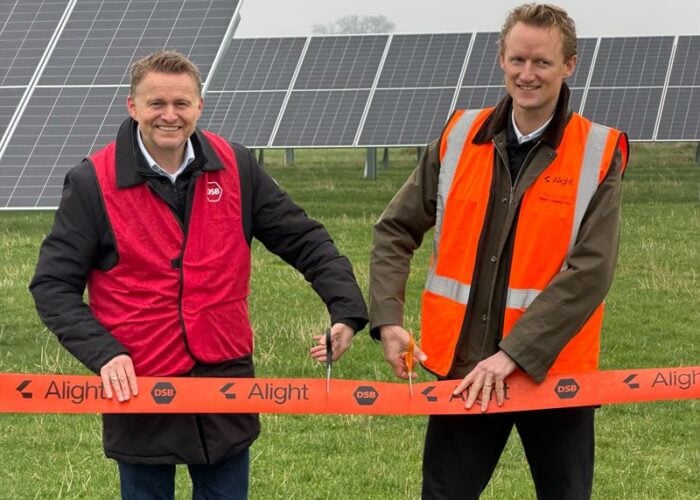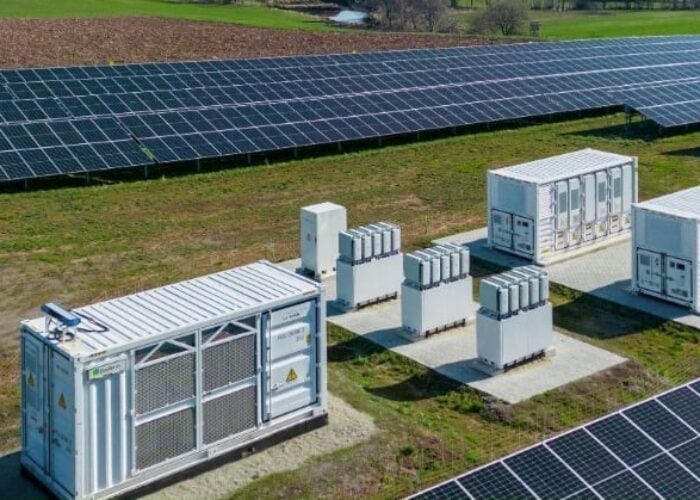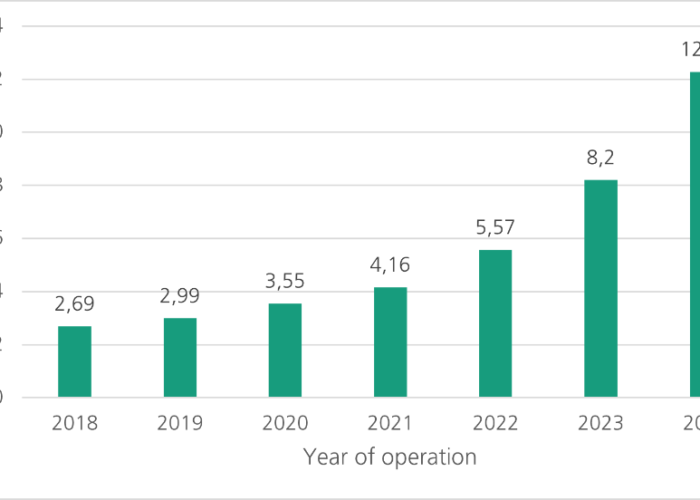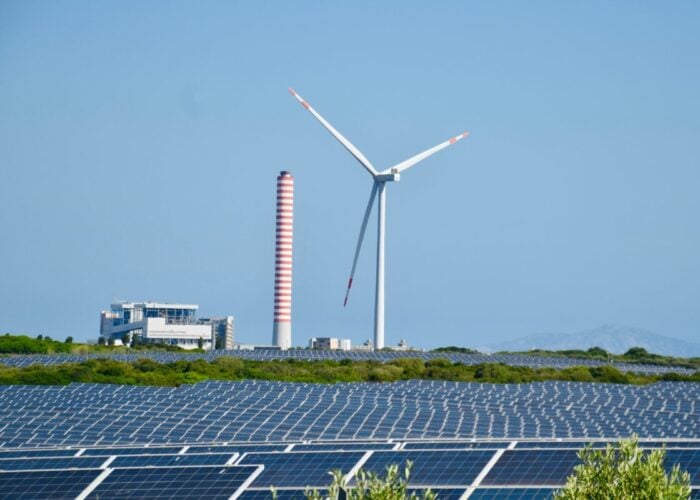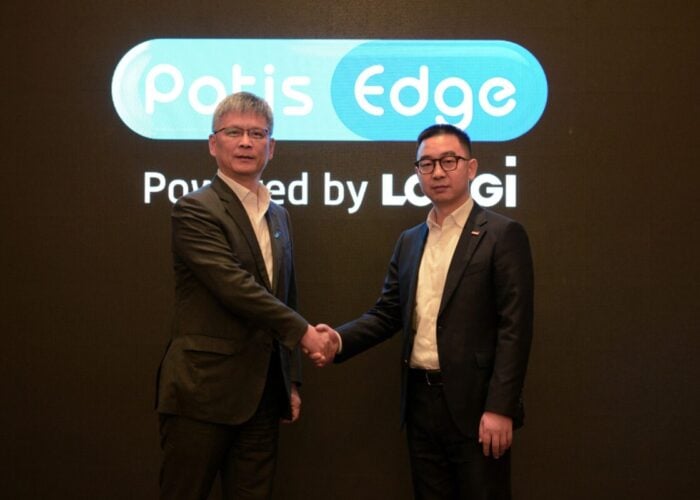
Europe must secure the “strategic segments” of the solar supply chain in order to effectively compete with other markets and protect its energy independence in an increasingly uncertain global solar industry.
This was the opinion of Betrand Lecacheux, CEO of French module manufacturing startup Holosolis, who spoke on a panel organised by PV Tech Premium and Energy-Storage.news at this year’s Intersolar Europe trade show, in Munich, Germany.
Try Premium for just $1
- Full premium access for the first month at only $1
- Converts to an annual rate after 30 days unless cancelled
- Cancel anytime during the trial period
Premium Benefits
- Expert industry analysis and interviews
- Digital access to PV Tech Power journal
- Exclusive event discounts
Or get the full Premium subscription right away
Or continue reading this article for free
“Before joining the PV industry I worked in other industries, and I saw how the Chinese and other Asian countries invested in what they considered ‘strategic segments’,” said Lecacheux, speaking about how expertise in the global solar sector had shifted from Europe to other markets, such as China and the US. He said this had left Europe in a vulnerable position as renewable power in general, and solar in particular, has become a more integral part of the global energy mix.
A report from think tank Ember, published in January of this year, found that by the end of 2024, electricity generation from solar PV had outpaced that of coal in Europe; an encouraging figure for the energy transition more broadly, but one that highlights the vulnerable nature of the European power sector.
In the wake of the energy crisis, triggered in part Europe’s reliance on Russian gas supplies, the case for a resilient, domestically-produced energy supply chain has become increasingly clear. The challenge is how to get there.
‘Innovation and IP are absolutely key’
“We realised, through crises, we were very dependent on foreign countries for energy, but also on any kind of manufactured goods,” continued Lecacheux. “It was putting Europe at risk due to changes in geopolitical decisions [and] supply chain disruption. We need to reindustrialise the industries that we left a few years ago, and redevelop the know-how that we have lost.”
“[China] developed these segments, became very competitive and transferred these technologies from the US and Europe, and then became the master of these technologies,” he added, suggesting that there is a path for Europe to establish a more resilient solar supply chain in this environment.
“For what we do, and for what Betrand does, innovation and IP [are] absolutely key,” agreed David Ward, CEO of British perovskite-tandem module manufacturer Oxford PV. Ward suggested that if Europe builds technologies with more niche applications and tailored uses, the continent will have products that are differentiated from, and able to compete with, those already available in China and the US. His comments in full can be watched in the video below.
“You cannot make a sane argument for doing traditional, old-school PV in Europe,” Ward continued. “You make an argument for doing innovative, high-end silicon PV; you make an argument for doing tandem and standing on the shoulders of [traditional silicon PV] to do the next generation.”
Ward’s comments are unsurprising, considering Oxford PV’s commitment to perovskites, but the fact that the company has shipped modules on a commercial scale and signed a licensing agreement with industry giant Trinasolar could indicate an appetite for innovative, European PV products.
Moreover, attendees across this year’s Intersolar suggested that market consolidation would follow in the wake of financial challenges endured by many industry leaders, highlighting the importance of building up a strong IP.
As Ward says, both from a financial and operations perspective, “you still have to prove your way through it”.
“That’s why having the facility that we have on the small-scale in Germany has been vital to prove the intellectual property, to prove that you have a product [and] to prove that high efficiency is important; customers want to buy a product and that there’s a business case for doing it,” said Ward.
Responding to chaos in the US
Making a strong business case and focusing on high demand is vital, particularly considering the huge concentration of the global supply chain in China. Ward noted that the transition from the small-scale production of niche technologies to “building gigascale in Europe” is a considerable jump.
These challenges have been reflected in the fate of Holosolis itself; at last year’s Intersolar event, then-CEO Jan Jacob Boom-Wichers told PV Tech Premium that “we have everything” for a large-scale solar manufacturing sector in Europe. One year on, this has not yet materialised.
Lecacheux, who took over as CEO in March of this year, picked up on this uncertainty, both for his own company and Europe more broadly, with the continent literally and metaphorically caught between the US and China.
“At least in PV, before Trump increased the tariffs, there was already a barrier for Chinese modules in the US, so we had already seen the transfer back from the US,” said Lecacheux. “It shows that if we are too dependent on foreign countries, a decision like that might completely disrupt the entire supply chain, and we’ll be at risk to get the products we need to get the modules we need to further develop the PV industry in Europe.”
“We have to reindustrialise almost everything,” said Gaëtan Masson, CEO of the Becquerel Institute, who called for a complete resurrection of the European manufacturing sector to protect Europe from this uncertainty. “Let’s take a simple PV module; it’s not just about PV module assembly, it’s about glass, aluminium, backsheets [and] screws. We have to restart from zero.”
“The US is out of the world now,” Masson said, whose comments are available in full above. “If you want to do business with the US – importing or exporting equipment, buying PV components now – they’re out of the world. You cannot make a business case for that because you have no idea what [is] the price you will get or the price you will pay.
“Forget about the US,” he continued, a striking comment considering the US’ recent growth in both solar deployment and manufacturing; figures from Wood Mackenzie and the Solar Energy Industries Association (SEIA) show that the US added a record of 50GW of new operating capacity in 2024.
More consistency from European policymakers
If the US is a lost cause when it comes to finding potential allies for the European solar sector, the panellists suggested that the relatively supportive nature of the European policy environment gives some cause for optimism.
“The Net-Zero Industry Act (NZIA) was published, the clean industrial deal was released [and] we see now in different countries – France, Italy, Austria – some criteria in favour of made-in-Europe products,” said Lecacheux, suggesting that European policy is moving towards support for domestic manufacturing projects.
The NZIA was first launched at last year’s Intersolar event, and has since been updated to include even more support for solar PV manufacturing; as Lecacheux says: “This is good news, and I would say the business case, compared to one year ago, is more solid now.”
Masson compared this to a more hostile, scattergun approach to renewables manufacturing legislation in the US, and said the unified EU measures could encourage European investors to prioritise using European-made products. He described this thought process as: “‘We don’t want to be resilient, we want made-in-Europe’.”
“Getting the permits and authorisation was [not] long and painful, it was not really the case,” addedLecacheux, whose comments on Holosolis’ efforts to scale up its manufacturing work are available above. This work has been met with challenges, but are ones that, according to Lecacheux, the company has been able to tackle.
“The second point is that we needed to raise funds, and public funds and subsides were as expected, so it was good news,” Lecacheux continued. “Then for private funds, you need to find people who are ready to take risks with you to build a big project like that. It takes more time than we expected at the beginning, and finding the partners at the beginning of the project, to join a big project like that, takes a lot of time these days.”
However, while on paper Europe’s policy landscape is more encouraging than the changes taking shape in the US, both Masson and Ward suggested that more work could be done to incentivise European manufacturing, both to boost its own business case and protect it from global disruption.
“There’s something more that many of us didn’t expect: a shift from policymakers, who were, almost unanimously, in favour of the energy transition and renewables to extremely sceptical political parties using the natural opposition towards the energy transition against us,” said Masson, pointing to general political uncertainty across Europe that mirrors some of the headwinds in the US, albeit to a much less dramatic extent.
“When I look in France and Spain, after the blackout, policymakers are looking at the energy transition increasingly with the feeling that: ‘We shouldn’t’ go that far because we’re destroying jobs in the conventional energy industry,” Masson continued.
“We have aspirations to do high volume manufacturing [but] that’s a more challenging policy environment to support doing that,” added Ward, who noted that Europe is not alone in its push to deliver a local supply of clean energy materials and components. The impetus to reindustrialise is happening elsewhere, too, which could limit the market for European products outside its borders.
Still, with the most optimistic figures from SolarPower Europe suggesting that European solar alone could employ around 1.4 million people by 2028, there remains a business case for greater investment in the industry as European policymakers and citizens alike look to solar as a source of consistency in an increasingly disrupted global energy landscape.

